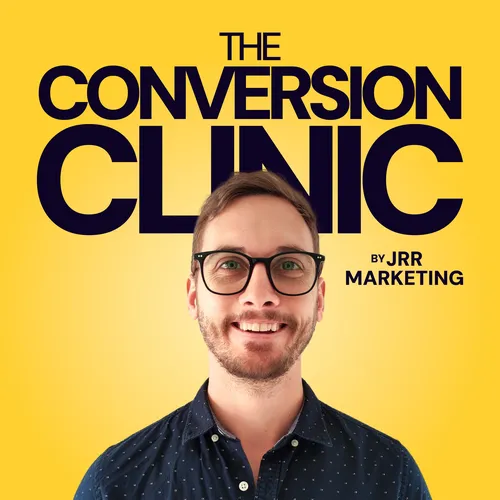How to Run A/B Tests in Google Ads for More Sales (5 Winning Ideas) | EP 13
- Author
- Josiah Roche
- Published
- Tue 10 Dec 2024
- Episode Link
- https://podcasters.spotify.com/pod/show/the-conversion-clinic/episodes/How-to-Run-AB-Tests-in-Google-Ads-for-More-Sales-5-Winning-Ideas--EP-13-e2qpr4k
In this video, learn the steps to set up effective A/B tests in Google Ads to boost your sales. A/B testing allows you to compare different ad elements, like headlines, images, and calls-to-action, to see which version drives better results. We’ll cover five proven ideas for running A/B tests that can help you refine your ads, understand what resonates with your audience, and increase conversions. Whether you’re new to Google Ads or looking to optimise your campaigns, these tips will guide you through making data-driven decisions to improve ad performance and maximise ROI.
Skip to Section:
(00:00) Introduction
(01:58) A/B Test 1: Maximising Conversion Value vs Conversions
(04:38) A/B Test 2: Broad vs Phrase vs Exact Match
(06:33) A/B Test 3: Landing Pages
(08:00) A/B Test 4: Manual CPC Bidding vs Maximise Clicks
(10:29) A/B Test 5: Ad Creatives and Audience Signals
Frequently Asked Questions:
Why is A/B testing important for improving Google Ads performance?
A/B testing helps you identify what elements work best for your audience, allowing you to refine your ads and get better results. It’s a way to use real data to make more effective advertising decisions and boost sales.
How do I set up an A/B test in Google Ads?
To set up an A/B test, duplicate an ad and change a single variable (like the headline). Then run both ads simultaneously and track their performance. Google Ads will show results in metrics like click-through rate (CTR) and conversion rate, helping you pick the winner.
How long should an A/B test run on Google Ads?
Ideally, run A/B tests for at least 1–2 weeks to gather enough data, but it depends on your ad’s traffic. High-traffic ads may need less time, while lower-traffic ads need a longer test period for accurate results.
What should I do if my A/B test results are inconclusive?
If your test results aren’t clear, try adjusting the test’s focus or using a different metric. Alternatively, expand the test’s audience or duration to gather more data for better insights.
What metrics should I focus on in A/B testing?
Focus on metrics relevant to your goals, like CTR for engagement, conversion rate for sales, or cost-per-click (CPC) for cost-efficiency. Your choice depends on what you aim to improve through testing.
